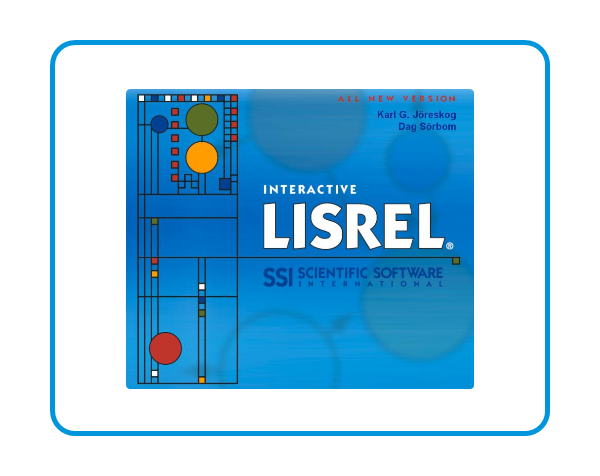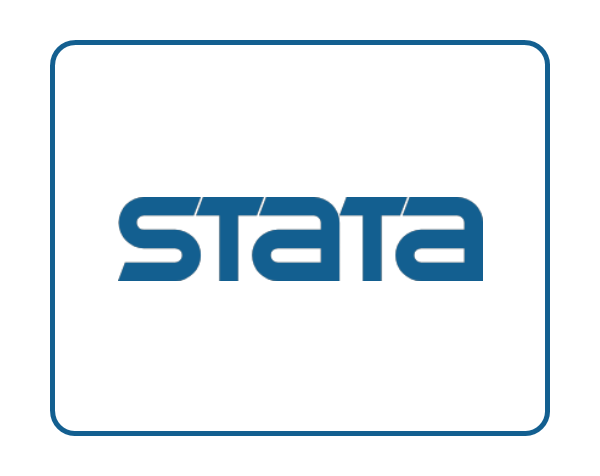EQS - 结构方程建模分析工具
EQS是广泛使用的结构方程模型(Structural Equation Modeling)的软件之一,因为它具有用户可以使用EQS绘图工具画一张路径图建立你的模型,并且使用统计方法正确地处理non-normal数据。EQS以便利的数据处理和统计预先处理。
EQS开发人员之一是由该领域在国际间享负盛名的Peter M. Bentler教授,EQS提供研究人员与统计学家建构结构方程模型的工具,复回归分析、多变量回归、验证性因素分析、结构分析路径分析以及多重母体比较。使用过的EQS的学者认同本软件的提供且操作接口。使用EQS,您可以不用具备矩阵代数的知识就可以轻易的操作本软件。
EQS提供更为的统计理论知识以分析实际上态分配的数据(事实上实际的数据也态分配)。 这些理论: Satorra-Bentler scaled chi-square, robust standard errors 以及 Yuan-Bentler distribution-free statistics。
EQS 目前可处理多列相关与多序类相关的类别数据。附加的探索性工具,增强RETEST及WTEST选择, 并且有能力输入权重矩阵。
为什么要使用EQS?
EQS设定了新标准EQS
以将技术复杂性和易用性相结合而闻名,借助EQS的新模型绘制工具Diagrammer,使结构方程式建模!
EQS树立了新的标准
EQS以结合易用性而着称,使用EQS的新型号绘图工具Diagrammer,使结构方程式建模!
新的DIAGRAMMER使建模变得!
点击几下鼠标,您就可以绘制演示文稿质量的图表。绘制模型后,从下拉菜单中选择“构建EQS”,然后EQS将基于该图表运行模型。不再需要使用命令语言!当您准备好展示结果时,直接打印图表或剪切并粘贴到您喜欢的文字处理器中进行生产。
借助EQS改进工作流程
EQS具有Windows应用程序所需的,并且具有点击功能,可访问EQS测试。现在,在EQS中可以,的处理以前与程序一起完成的数据准备和评估。将数据直接输入EQS的电子表格编辑器,通过标准格式(dBase,Lotus等)导入,或从包中剪切和粘贴数据(原始数据,相关矩阵等)。在电子表格中,用户可以转换变量,编辑数据或执行探索性因素分析与创建自动模型设置。
建模功能
EQS测试全范围的结构方程模型,多重回归,多元回归,验证性因子分析,结构化均值分析和多元总体比较。EQS还polyserial和polychoric用于治疗分类数据的相关性,所述Satorra-Bentler标度卡方统计,增强了RETEST和W测试选项,并能够导入权重矩阵。
大量的统计和绘图选项
EQS将统计分析功能(描述性,t检验,ANOVA,多重和逐步回归等)与数据探索图(散点图,直方图,矩阵图,饼图,多重图等)结合在一起,为研究人员提供了协调的代数以及他们数据的图形视图。从这些视图中获得的见解将帮助用户的制定模型。在不同的软件包之间切换,即可执行分析,从而使用户有更多时间用于他们的模型。
研究人员的考虑
EQS目前为心理学,教育,经济学,市场研究,社会学和领域的数千名研究人员提供结构方程建模技术。一旦你尝试了EQS,你会发现它为研究人员提供了很大的易用性。
EQS功能
改进的正态理论和缺失数据方法
-
样本的Jamshidian-Bentler EM型丢失数据过程
-
Kim-Bentler随机缺失检验(MCAR),均值和协方差的均质性
-
LM和Wald在多样本分析中进行测试
-
Bentler-Yuan检验用于潜在的结构化均值模型
-
Bentler-Raykov校正了非递归模型的R平方
-
计算并保存回归和Bentler-YuanGLS因子得分
-
用于结构化均值分析的高等起始值
-
总体效果的标准
-
基于一因素模型的复合材料内部性可靠性和系数复合
-
因子模型的可靠性系数rho
-
Cronbach的alpha,Bentler的无量纲下限可靠性和Shapiro的加权复合材料下限可靠性
修正了非正态和缺失数据的正态理论方法
-
Satorra-Bentler统计用于多种方法和多样本分析
-
纠正(Satorra-Bentler robust)标准误差以产生间接影响的正态影响
-
LM测试的Satorra-Bentler信息矩阵
-
Yuan-Bentler F检验和Yuan-Bentler-Browne残差统计
-
Yuan-Bentler可以对非正常缺失数据进行正确的统计
异构峰态方法
-
异质峰度的Bentler,Berkane和Kano统计
任意分配方法
-
渐近无分布(ADF)均值和协方差结构方法
-
Yuan-Bentler校正了卡方和F检验
-
Yuan-Bentler更正了ADF标准错误
-
相关结构的ADF分析
Case(Subject)加权方法
-
加权均值和协方差结构分析(例如,用于复杂样本调查)的先验案例权重
-
Yuan-Bentler稳健的异常值和影响力观察方法
多层次模型
-
HLM(Chou,Bentler和Pentz)和多级方法用于潜在变量
-
Bentler-Liang较大似然多级方法
-
Muthén的MUML多层次方法论
重采样和仿真方法与统计
-
通过引导程序进行标准化解决方案等的标准错误
-
基于模型的引导(扩展了Beran-Bollen-Stine方法)
-
扩展的仿真能力:多组和MCAR数据生成
-
Deng-Lin FMRG随机数发生器
建模功能和方法
-
/MODEL指令用于的模型规划(实际上了对/EQUATION,/VARIANCE和/COVARIANCE部分的需要)。方程式是用一些的脚本命令构建的
-
构建约束的命令脚本
-
模型变量(分类变量)的数量增加到200
-
SAVE指令用于保存估算数据和因子得分
-
Satorra-Bentler“Robust”统计数据的统计数据和索引可单独报告
-
EQS输出为HTML格式的可选
-
EQS输出可选为矩阵格式或紧凑格式(而不是方程式格式)
图形化功能
-
用于创建和报告模型的Diagrammer
-
向导系统创建路径,因子,结构方程式和潜在增长曲线模型
-
为潜在增长曲线模型计算的多项式—正交系数
用户界面改进
-
树状视图大纲中的项目管理器,用于组织和检索分析
-
通过的拖放操作即可移动项目的运输工具及其相关分析
-
具有更多的可用的数据编辑器,并且样本数量不受限制
-
数据表可通过的拖放操作进行修改
-
现在可以在数据编辑器上直接输入协方差矩阵
-
更好的3D数据图
-
改进且更通用的方差分析
-
一些非参数的统计分析可用
-
用于数据插补的前端EM丢失数据过程
-
改进的方程式生成器
-
语法窗口中的通用多方程数据转换
-
转换公式时可保存且重复使用的
-
为变量或整个数据表创建z-scores
硬件和软件要求:
Windows:
IBM PC386、486,Pentium或兼容版本
A math co-processor
8MB的RAM
5MB的可用磁盘空间
Windows XP,Windows Vista,Windows7和Windows8
32位和64位
EQS软件的平台:
SUN/OS Solaris 1.x&2.x
AIX on IBM RS/6000
HP/UX on HP-9000 700 series
EQS STRUCTURAL EQUATION MODELINE SOFTWARE
Developed by one of the world's leading authorities on the subject, Dr. Pentler, EQS provides researchers and statisticians with a simple method for conducting the full range of structural equations models including multiple, multivariate regression, confirmatory factor analysis, structured means analysis, path analysis, and multiple population. Users agree that EQS is more complete and much easier to use than other products such as LISREL. With EQS, no knowledge of matrix algebra is reguired!
EQS handles a wide variety of structural equation models in all types of computer environments. Users can draw a path diagram using EQS' drawing tool to create their model, and use the most advanced statistics to correctly treat non-normal data.
EQS provides the most accurate known statistics for analysis on data that may not be multivariate normally distributed with the Satorra-Bentler scaled chi-square, robust standard errors, and the Yuan-Bentler distribution-free statistics. These features are not available in other modeling programs.
EQS now includes polyserial and polychoric correlations for treating categorical data, additional exploration functions, enhancements to the RETEST and WTEST options, and the ability to import weight matrices. Already known for combining technical sophistication with ease of use, EQS makes structural equations modeling even easier with Diagrammer, EQS' new model drawing tool!
Make just a few clicks on the mouse and you can draw presentation-quality diagrams. Once your model is drawn, choose Build EQS from the scroll-down menu and EQS runs your model, based on the diagram. When you are ready to present results, simply print the diagram directly or cut and paste into your favorite word processor for final production.
Improved workflow with EQS Data preparation and eva luation that previously had to be done with other programs is now handled seamlessly and efficiently within EQS. Simply enter data directly into EQS' Spreadsheet Editor, import via standard formats (dBase, Lotus, etc.), or cut and paste data (raw data, correlation matrix, etc.) from another package. In the spreadsheet users can easily transform variables, edit data, or perform exploratory factor analysis to create an automatic model setup.
Full range of modeling features
EQS tests the full range of structural equations models including multiple regression, multivariate regression, confirmatory factor analysis, structured means analysis and multiple population comparisons.
EQS also includes polyserial and polychoric correlations for treating categorical data, the Satorra-Bentler scaled chi-square statistic, enhancements to the RETEST and WTEST options, and the ability to import weight matrices.
Extensive statistical and plotting options
EQS combines statistical analysis capabilities (descriptive, t tests, ANOVA, multiple and stepwise regression, etc.) with data exploration plots (scatter plot, histogram, matrix plot, pie chart, multiple plot, etc.) to provide researchers with coordinated algebraic as well as graphical views of their data. Insights gained from these views will help users to efficiently formulate an optimal model. There is no need to switch between different software packages to perform various analyses, allowing users more time to focus on their model.
- 2025-12-29
- 2025-12-18
- 2025-12-17
- 2025-12-15
- 2025-12-12
- 2025-12-12
- 2025-12-30
- 2025-12-25
- 2025-12-19
- 2025-12-16
- 2025-12-10
- 2025-12-09

















